5 Things to Help Plan Your Patient Television Installation
Last Updated: August 9, 2024 by Cat Saettel Are you wondering what TV equipment to buy, how to safely install and control televisions for patient...

NOTE: This blog was last updated on Oct 11, 2024.
When shopping for entertainment solutions for patients, hospital and healthcare providers want to be sure the patient devices are safe, reliable, and are technically intuitive so they meet the high standards consumers expect in healthcare. Since technology is constantly evolving, it can be challenging to know how patient displays differ technically from looking at them on the outside.
Here's a list to check the hardware and software of patient televisions. This will help ensure they are up to snuff to advance your facility to the cutting edge of technology and keep you there for years to come.
Watch this short video clip for quick safety insights by Jon Smith, PDi Director of Engineering:
When shopping for patient TVs, start off by looking for the UL Listing mark. UL is a company that inspects and certifies products to meet the safety requirements of UL and of the governing country the product will be sold in. UL certifies thousands of different types of products, be sure to look for the specific healthcare standard. As of 2024, PDi builds hospital TVs to meet the newest standard in the US and Canada, UL/cUL 62368-1, Annex DVB, and the earlier PDi sets have UL 60065 Annex Q as the specific standard covering television and video products in a healthcare environment.
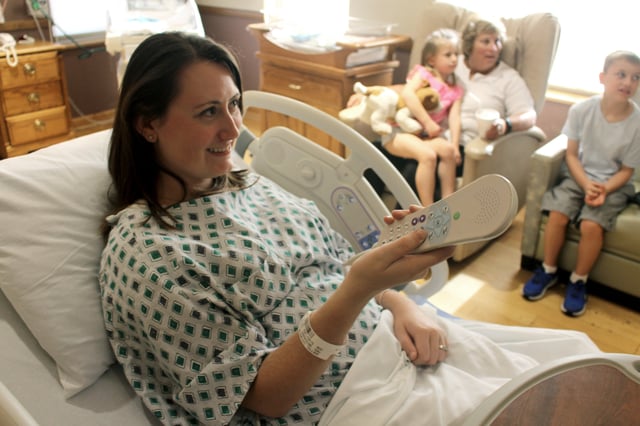
A key differentiator of medical-grade TVs is the ability to control the TV with a special patient remote - called a pillow speaker (also a UL-Listed device).
A pillow speaker usually integrates with a nurse call system and has a microphone and speaker embedded to serve the patient when they need assistance. It also can play the audio of the TV through its speaker. Being placed near the patient's head will reduce the need for the patient to turn up the volume and risk disturbing other patients in neighboring rooms or your nursing staff.
Not all pillow speakers are designed the same and connect to all medical-grade TVs. PDi proudly partners with Curbell Medical for our Smart Pillow Speaker to control Epic(R) MyChart(R) Bedside TVs and our GENiO interactive Smart TV platform. Many PDi TV models work with a universal pillow speaker.
Today, interactive touchscreen TV terminals at the bedside or clinic chair serve the purpose to customize your patient engagement experience. Check out the latest medTAB® touchscreen innovations with GENiO™ remote device management software by the leading US-based patient TV manufacturer, PDi Communication Systems, Inc.

Today, electronics are germ collectors. Ghastly amounts of germs collect on cell phones, touchscreens, and TV remotes. It is important that in a healthcare environment, vital pathogens are not spread from patient to patient. Inquire about features such as anti-microbial paint coatings or if hospital TVs are designed for repeated cleaning. Watch this PDi video for more on how to clean hospital TVs properly:
.

Hassling with technology is the worst. Before you purchase any new technology make sure you and your staff can manage the devices easily, and save time and money getting this initiative off the ground.
Find out if the medical-grade TVs have USB-cloning or remote device management that will allow your team to copy the TV settings with ease. US-based PDi offers GENiO cloud-based, remote management so your staff can adjust settings without leaving the office or entering the patient room to make changes. Look into how far the setting controls go. For example, you can look at programmable volume limiters - so you can control noise levels on certain floors and times.
Check out the list of FAQs on PDi healthcare-grade TVs to learn more.
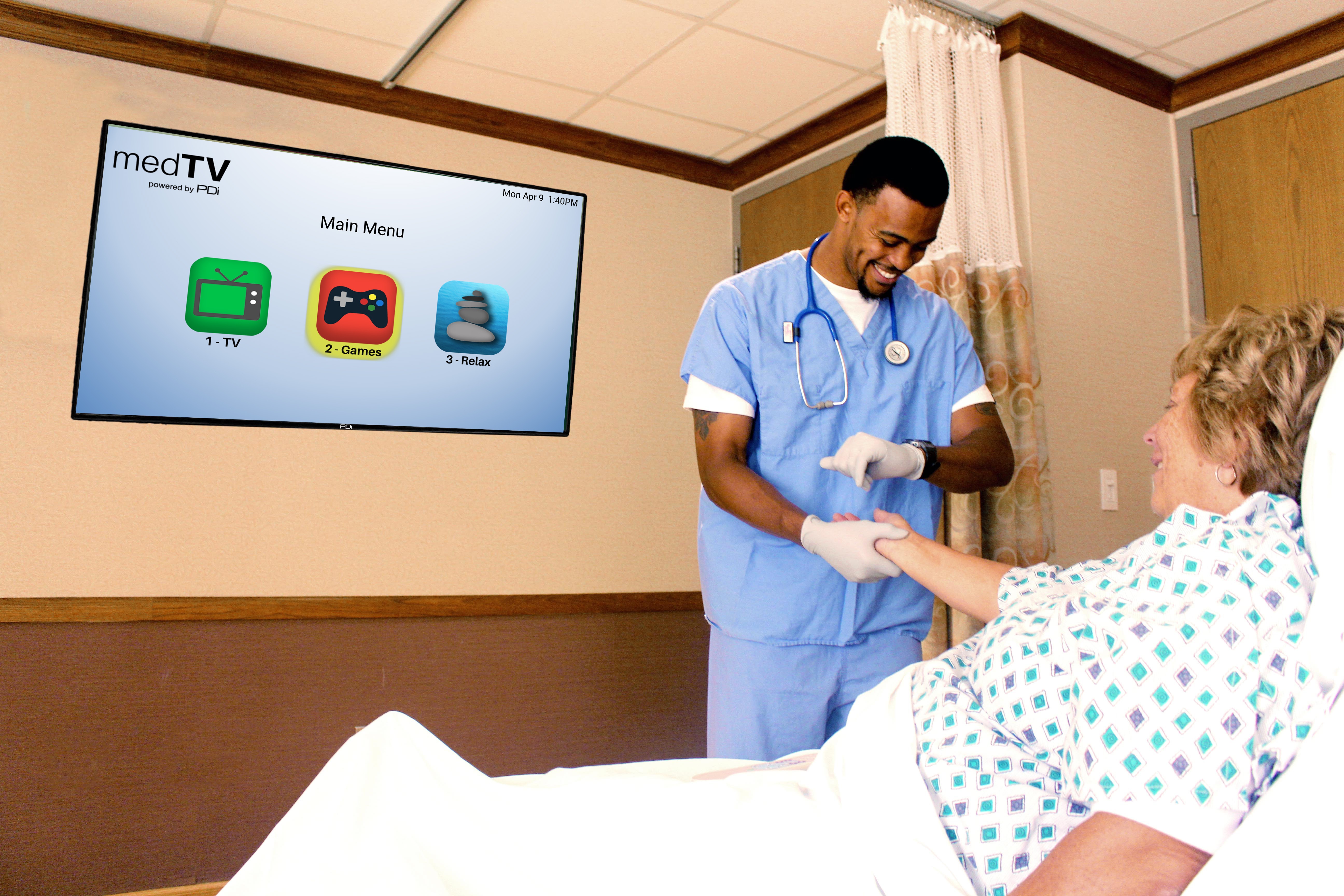
Patient TVs are more than just an entertainment solution.
They’re a key part of the overall patient experience. Just as personal technology has advanced, though, most patients expect their hospital TVs to have many different features. This might mean patient education videos, or simply games and relaxation options. Smart hospital TVs and touchscreens by PDi help you to better engage patients your way with an affordable way to expand the options in a medical-grade TV to offer your patients more choices.

It is no secret that healthcare environments are unpredictable and high-stress situations can occur there. While no piece of technology is bulletproof, search for a TV that is as tough as you can find as insurance for "off the wall" situations.
For example, ask about the materials. If the device has cheap plastic components, it will likely shatter if it is knocked off the wall. Ask if the device is liquid-resistant. If fluid enters the device it could pose a risk to anyone who touches the device.
Additionally, see if the TV is low voltage and if there is a grounding pin to guard against shocks or burns if there is an electrical current leak. Trust a vendor who builds the complete solution for low-voltage patient TVs, PDi.

Televisions everywhere are functioning more and more like computers than just broadcasting channels. This opens up a world of possibilities for healthcare providers to engage with patients in completely new ways.
Interactive patient software made for platforms and apps now allow healthcare providers to deliver and gather valuable information with the patient during the entire course of their treatment. If you have an interactive patient system you wish to implement in your facility (or think you will implement one in the future), ensure the display has the ability to deliver the software. Additionally, make sure it functions well within your healthcare environment.
PDi builds the only Android(TM)-based Smart Hospital TVs compatible with Epic(R) MyChart(R) Bedside TV. Patients access daily health schedules, pre-op instructions, patient medication information, care team, and more on PDi Smart Hospital TVs. Contact us to learn more.
The affordable, cloud-based interactive patient TV platform, GENiO™ powered by PDi, let's you choose the content that matters most for your patient experience. GENiO cloud-based platform works on PDi medTV Smart hospital TV displays up to 65" and medTAB® touchscreens. Learn more on how you can save nurses steps and help them perform happily at the top of their license, focusing on patient care.
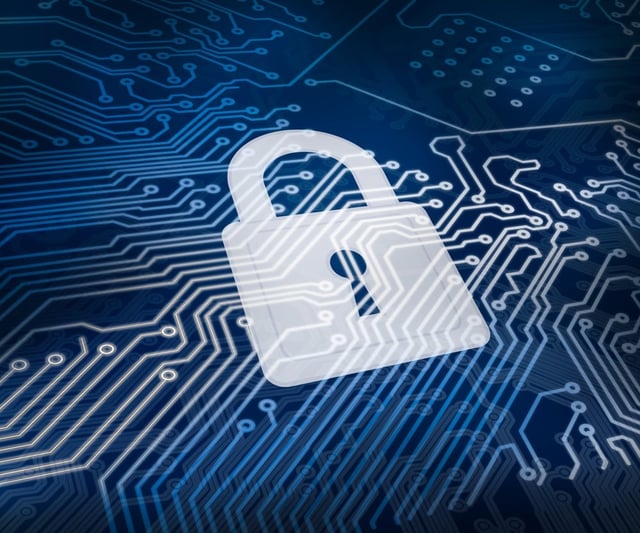
With Smart patient televisions, the risks associated with computers must come into the equation. Cybersecurity concerns and HIPAA compliance are of utmost importance. You want to make sure the device you choose is secure within your facility network and does not compromise any patient or hospital data.
Make sure to inquire about the security and privacy settings that are ready for use out-of-the-box on the device. Ask about how patient user profiles and passwords are created and stored and look for devices that are set up to make security as fool-proof as possible.

A hospital TV is going to be playing much longer and without as many breaks as the typical TV at home. A good medical-grade TV should run for at least 18 hours a day compared to 6 hours a day on consumer TVs. A well constructed medical-grade TV will also not overheat easily. It should dissipate heat more effectively and operate at a lower temperature, 25˚C, compared to 60˚C of comparative consumer-grade TVs.
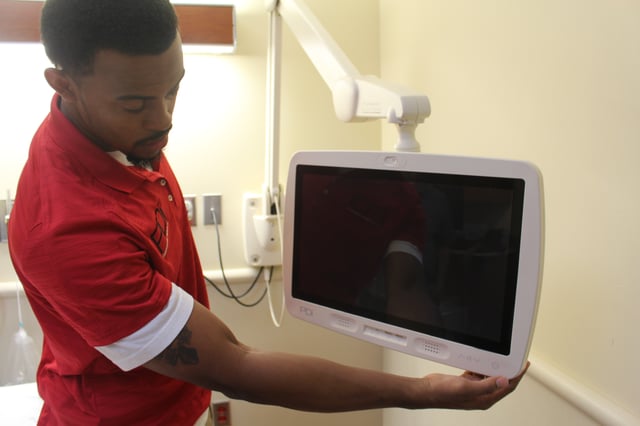
You are making a significant investment to equip your facility with medical-grade televisions for patients. Ensure your investment is protected by researching the warranty the manufacturer offers and their process to deal with technical issues.
Do they send a technician to you? Who covers the cost of shipping faulty product for repair? What does their repair/replacement procedure look like?
Follow up by looking for company service reviews online or by asking to speak with another current customer to ensure the company follows through with their claims. It is far better to take time to see proof of quality service before the purchase is complete than to deal with the headache of bad service after installation.
Looking for a higher quality healthcare-grade television?
Look no further...
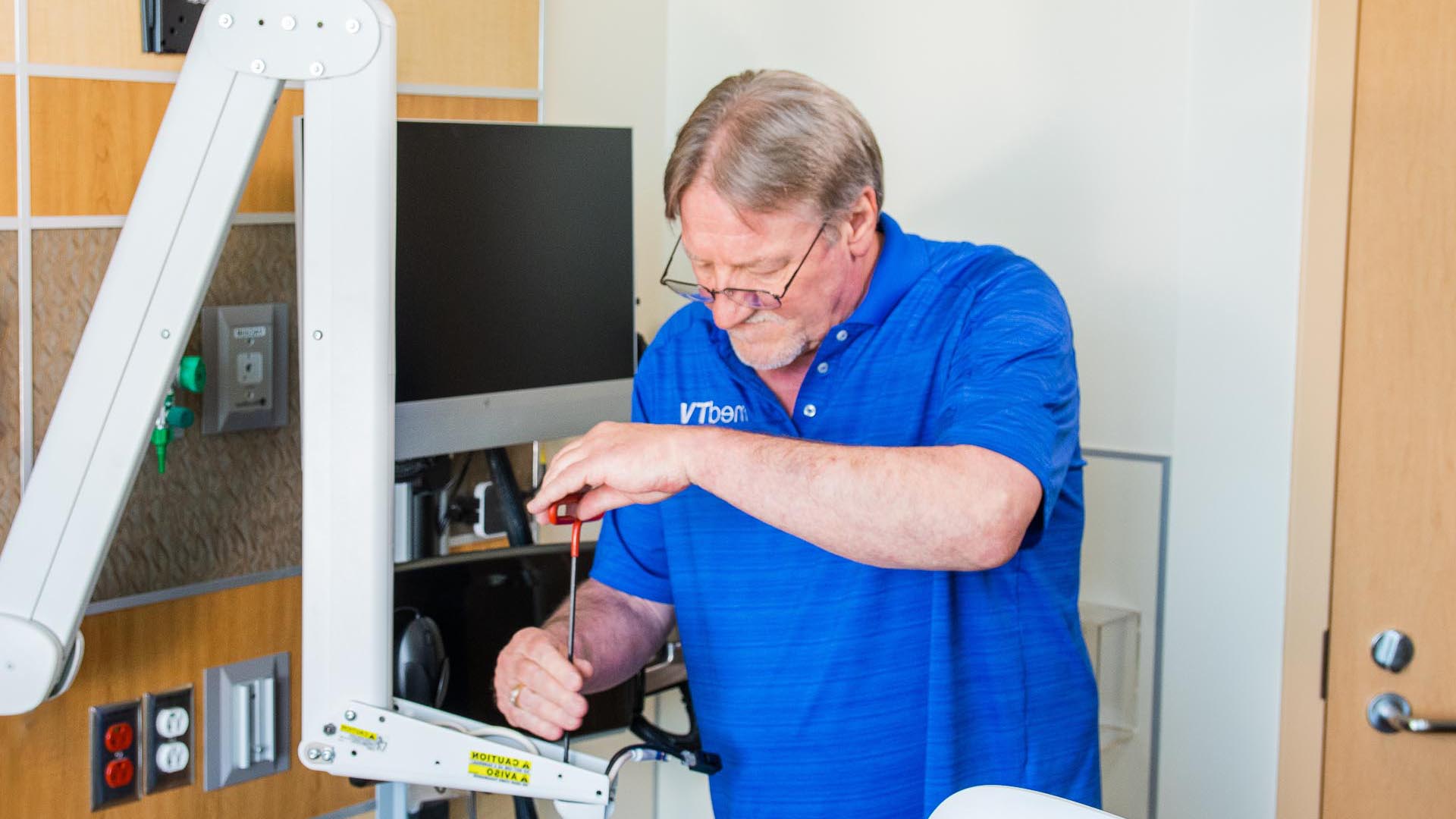
Last Updated: August 9, 2024 by Cat Saettel Are you wondering what TV equipment to buy, how to safely install and control televisions for patient...
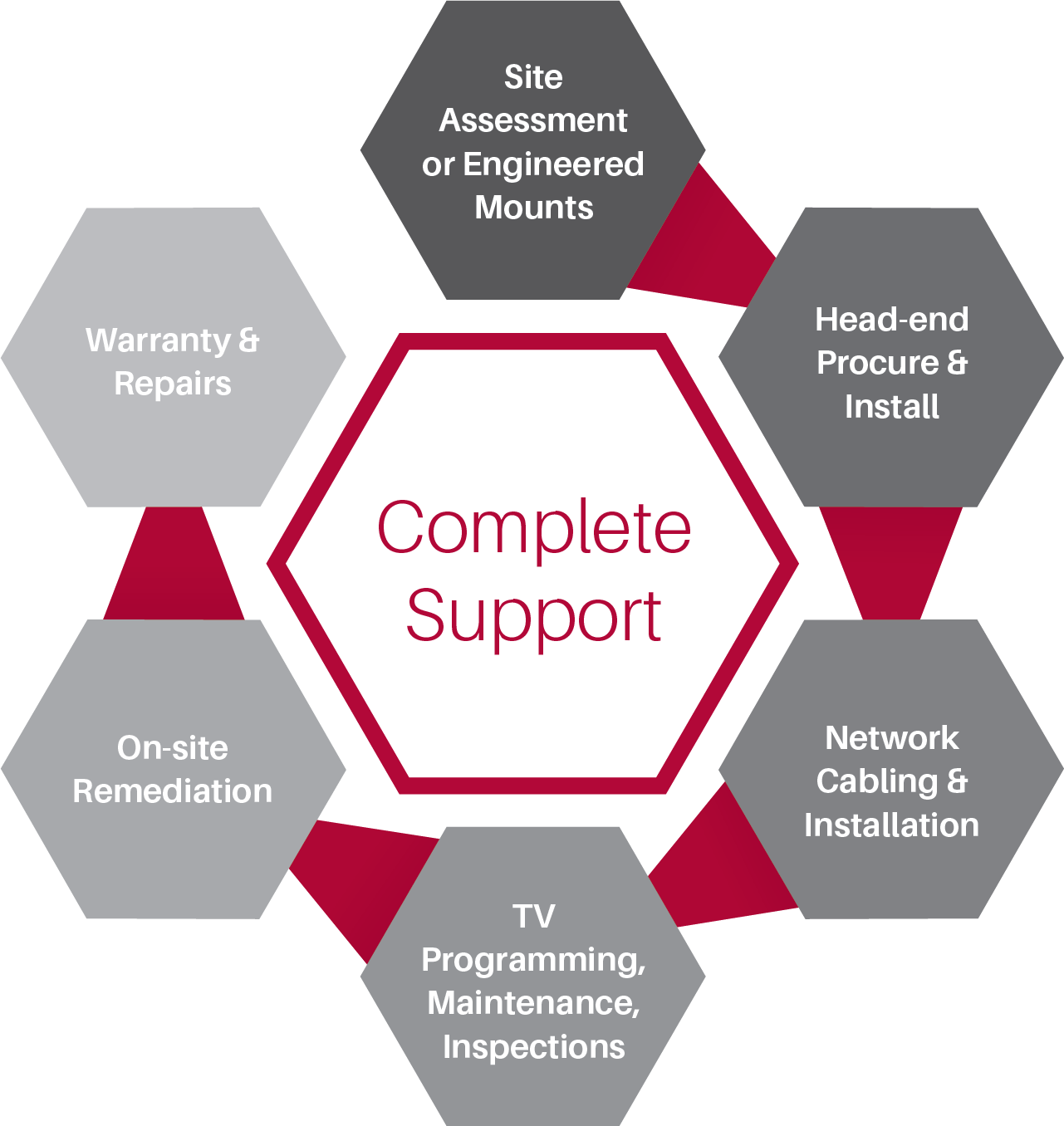
1 min read
It may feel like you should be able to easily choose just any TV you want for your healthcare facility. We do that for our homes, why not in a place...
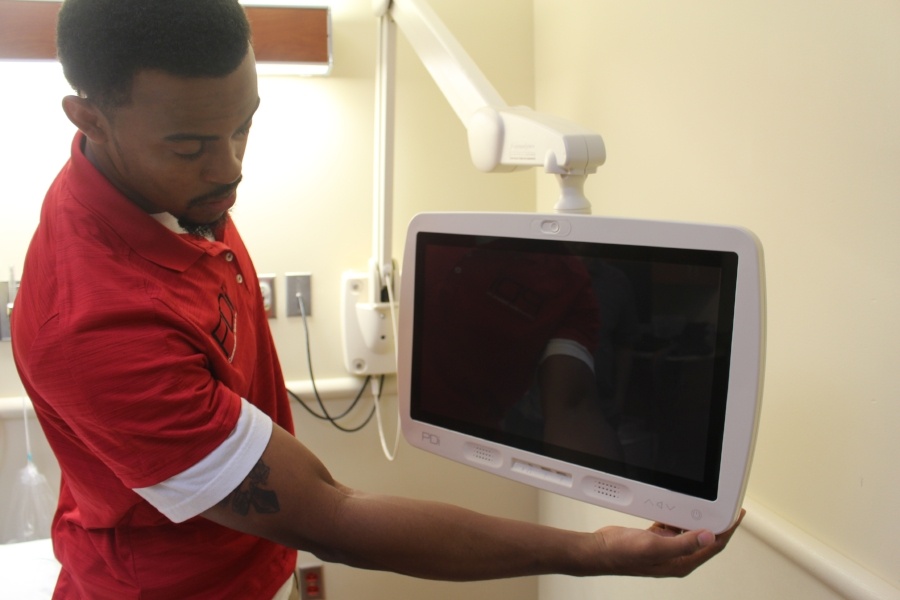
Satellite, Cable, IPTV, oh my! Where does one start to understand how to provide excellent TV options to entertain and inform patients who are in the...